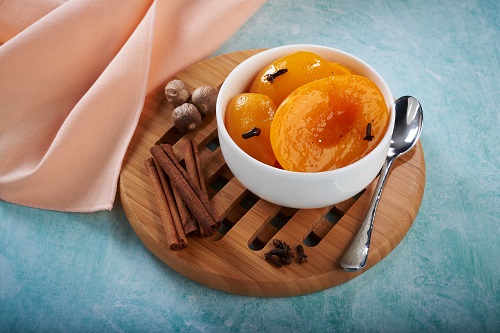Juicy Facts about Stone Fruits
As summer approaches you may notice a growing abundance of stone fruits at your local grocery store.
What is a Stone Fruit?
The name, stone fruit, refers to fruits with a large seed or pit that is hard like a stone. The stone helps support the fruit as it hangs on the tree. Common stone fruits include apricots, cherries, mangoes, nectarines, peaches and plums. In addition, hybrid varieties include pluots and apriums. During the months of May through August, you will likely find numerous types of stone fruits at your local grocery or farmer’s market.
Nutrients
The sweet, juicy flesh of stone fruits can serve as a refreshing way to keep your mouth moist during the warm season. Stone fruits provide a good source of vitamin C and fiber. Potassium content varies. It is important to be mindful of how much potassium you consume when including stone fruits in your diet. Remember to consider other potassium-containing foods in your daily diet. Check out the difference in potassium amount when eating a single piece of fruit compared to a one-cup serving – the portion size matters!
| Stone Fruit | Potassium (mg)
1 piece |
Potassium (mg)
1 cup slices |
| Plum, 2-1/8-inch | 104 | 259 |
| Nectarine, 2-1/2-inch | 259 | 287 |
| Peach, yellow, 2-2/3-inch | 285 | 293 |
| Cherry | 18 | 306 (17 each) |
| Apricot | 91 | 427 (5 each) |
| Mango | 565 | 277 |
Serving Stone Fruits
To ripen, store the fruits stem-side down at room temperature for one to two  days. When ready, you can eat the fruit as is or use them in many types of dishes. Stone fruits can be roasted, sautéed, grilled, baked into fruit pies, or tossed into your salad. Some of my favorites include Cherry Cream Cheese Mini-Tart, Peach Crisp and Spicy Peaches.
days. When ready, you can eat the fruit as is or use them in many types of dishes. Stone fruits can be roasted, sautéed, grilled, baked into fruit pies, or tossed into your salad. Some of my favorites include Cherry Cream Cheese Mini-Tart, Peach Crisp and Spicy Peaches.
Try this Blueberry Peach Crisp from DaVita Eats:
Check out more delicious sweet treats made with these stone fruits on DaVita.com.
Resource: USDA Food Composition Database

Recent Comments